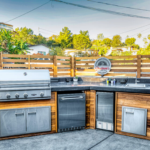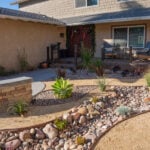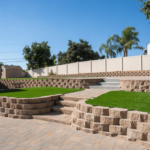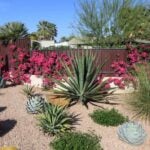Artificial Grass Project
For many businesses and households, artificial grass—also referred to as synthetic turf or fake grass—has grown in popularity as a landscaping choice. For those looking for a lush, green lawn without the difficulties of natural grass, its low maintenance requirements, durability, and constantly increasing appearance make it a tempting option. Knowing what you need to install fake grass successfully is essential, regardless of whether you’re a do-it-yourselfer or want to hire a pro. To make sure your fake grass project is a huge success, we’ll go over all the necessary components, detailed instructions, and practical advice in this complete guide.
Preparation and Planning
Measuring the Area
Before you begin, measure the area where you intend to install artificial grass. Accurate measurements are crucial to order the right amount of turf and materials. Use these procedures to measure the area:
- To ascertain the space’s length and width, use a measuring wheel or tape measure.
- To determine the square footage, multiply the width by the length. If your space isn’t a perfect rectangle, divide it into smaller sections and measure each one separately.
- Add about 5-10% to the total square footage to account for any irregularities and future repairs.
Surface Inspection
Inspect the area where you plan to lay artificial grass. Ensure that the surface is:
- Level: Remove any high spots and fill in low areas.
- Smooth: Clear any debris, rocks, or tree roots.
- Properly sloped: The area should have a slight slope for drainage, typically 2-3 inches over ten feet.
Soil Preparation
The next step involves preparing the soil. You’ll need to create a solid foundation to ensure the artificial grass stays flat and doesn’t shift over time. Follow these soil preparation steps:
- Remove the existing turf: If you have a natural grass, you’ll need to remove it. Use a shovel or a turf cutter for this purpose. Make sure to remove not only the grass but also the root system.
- Tamp down the soil: Use a hand or mechanical compactor to ensure the soil is firm and well-compacted. This will help prevent uneven settling.
- Add a layer of crushed rock: Spread a layer of crushed rock (around 2-4 inches) over the tamped soil. This serves as a stable base for your artificial grass.
- Moisture barrier: Lay a moisture barrier, typically a weed barrier fabric, over the crushed rock. This prevents weeds from growing through the artificial grass.
Tools and Materials
Essential Tools
To lay artificial grass effectively, you’ll need several tools. These tools ensure precision and efficiency during the installation process. The basic tools include:
- Utility knife: Used for cutting the artificial grass to fit the space.
- Tape measure: Essential for accurate measurements.
- Shovel and rake: For clearing the area and leveling the soil.
- Wheelbarrow: Used to transport materials like crushed rock.
- Compactor: For compacting the soil and crushed rock.
- Staple gun: Used to secure the artificial grass.
- Hammer: To drive in stakes and edging.
- Broom or power broom: For brushing and fluffing the artificial grass.
- Gloves and knee pads: To protect your hands and knees during the installation.
- Safety glasses: To protect your eyes from debris.
Materials Checklist
In addition to the tools, you’ll need several materials to complete your artificial grass installation project. The essential materials include:
- Artificial grass: Ensure you purchase high-quality artificial grass with a suitable pile height for your intended use.
- Crushed rock or decomposed granite: To create a stable base.
- Moisture barrier fabric: To prevent weed growth.
- Edging material: Typically, this is made of wood, plastic, or metal, and it helps to contain the artificial grass.
- Nails or staples: Used to secure the edging and artificial grass.
- Infill material: Options include sand or rubber granules, which help weigh down the artificial grass and provide cushioning.
- Adhesive or seam tape: For joining multiple pieces of artificial grass together.
- Optional: weed killer: To ensure no weeds grow through your artificial grass in the future.
Now that you have your tools and materials ready, let’s move on to the installation process.
Installation Steps
1. Clearing the Area
- Start by clearing the area of any debris, including rocks, sticks, and other objects that might obstruct the installation.
- Remove any existing grass or vegetation, ensuring you have a clear, level surface.
2. Laying the Base
- Once the area is cleared, use your shovel and rake to level the ground. The goal is to create a smooth, even surface.
- Compact the soil using a compactor to ensure it’s firm and won’t settle unevenly.
3. Weed Barrier Fabric
- Roll out the weed barrier fabric over the prepared surface. Overlap the edges of the fabric by a few inches to ensure complete coverage.
- Secure the fabric to the ground using landscape staples, ensuring it’s taut and without wrinkles.
4. Edging
- Install edging material around the perimeter of the area. This provides structural support for the artificial grass and prevents it from shifting over time.
- Secure the edging in place using nails or stakes. Make sure it’s level with the desired finished height of the grass.
5. Laying the Artificial Grass
- Unroll the artificial grass over the prepared area. Ensure it’s positioned correctly and lines up with the edges and any adjoining pieces.
- If you have multiple pieces to join, ensure that the blades of grass run in the same direction to achieve a seamless look.
- Trim any excess artificial grass with a utility knife, ensuring it fits snugly against the edging.
6. Securing the Turf
- Use a staple gun to secure the artificial grass to the base. Place the staples or nails about 6 inches apart along the edges.
- Be sure to keep the artificial grass stretched tight as you staple it to the base to prevent wrinkles or sagging.
7. Trimming and Shaping
- Trim the edges of the artificial grass neatly, ensuring it fits the contours of your space perfectly.
- Use a utility knife to cut around obstacles like trees or flower beds, leaving a small gap for expansion and contraction.
8. Adding Infill Material
- Spread the infill material evenly across the artificial grass. Depending on the type of infill, you may need a drop spreader to achieve an even distribution.
- Use a stiff-bristled broom or power broom to work the infill material into the turf, brushing against the grain. This helps the blades stand upright and stabilizes the artificial grass.
9. Brushing and Fluffing
- Finally, brush and fluff the artificial grass with a broom or power broom. This step helps the blades stand upright and gives your lawn a natural appearance.
- Brush in different directions to ensure even distribution of the infill and a uniform look.
Maintenance and Care
Artificial grass is beloved for its low maintenance, but it still requires some care to ensure it looks its best for years to come.
Regular Cleaning
- Sweep regularly: Use a broom or leaf blower to remove leaves, debris, and dirt from the surface.
- Hose down: Occasionally, hose down the artificial grass to remove dust and pet hair. It helps to keep it looking fresh.
Periodic Grooming
- Use a power broom: Periodically, use a power broom to fluff up the fibers and redistribute the infill material. This prevents matting and keeps the grass looking lush.
Handling Stains and Spills
- Act quickly: Clean up spills as quickly as you can to avoid leaving stains on the artificial grass, such as coffee or pet poop.
- Rinse with water: Use a moderate detergent and water to rinse the area, if needed. Avoid using harsh chemicals that could damage the grass.
- Pet waste: If you have pets, regularly pick up solid waste and rinse the area. Synthetic turf is pet-friendly, but it’s best to keep it clean to avoid odors.
Success with Installation
Laying artificial grass can be a rewarding DIY project or one entrusted to a professional landscaper. Understanding the steps involved, the tools and materials you’ll need, and the necessary maintenance will contribute to a successful artificial grass installation. With proper planning, attention to detail, and ongoing care, your synthetic lawn will provide you with a beautiful, low-maintenance outdoor space for years to come. Whether you’re revamping your home’s curb appeal or upgrading a commercial property, artificial grass offers a lush and sustainable solution that can transform any landscape.






